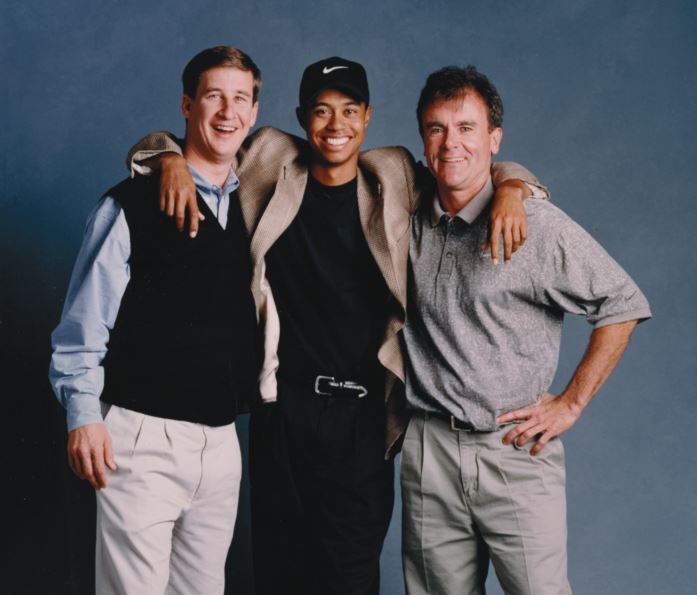If you’re looking for one small positive outcome from the splintering of professional golf caused by the renegade LIV Golf league, may I offer “Rainmaker,” the story of Superagent Hughes Norton and the Money Grab Explosion of Golf from Tiger to LIV to Beyond (Atria Books/$28.99).
Twenty-five years ago, Norton was a big deal in the golf world, some might say huge. Another golf publication dubbed him “the most powerfully hated agent in sports.” But after being fired by Tiger Woods and soon thereafter by his employer, the sports management behemoth IMG, Norton was paid handsomely not to work, nor compete against his own company and definitely not to spill the beans on how the sausage was made. And so by the time that deal had expired, he was old news and a mostly forgotten figure in the game. But he still had an incredible story to tell and a wealth of knowledge on the explosion of professional golf.
The response to a podcast he did two years ago sparked renewed interest in the idea of writing his memoir. Book publishers, however, only want slam dunks. That’s why he says it took the PGA Tour-LIV controversy to get this book made. All of a sudden, the two protagonists in the drama — Tiger Woods defending the Tour and the importance of a player’s legacy and Greg Norman taking all the slings and arrows as the frontman for the Saudi-funded renegade league — had both been clients of Norton’s and each fired him in their own distasteful way.
“Who knew these guys better than their agent for all those years?” Norton says. “That got it done.”
Hey, whatever it takes because this is one of the best golf books I’ve read in a long time. Norton takes us inside the world of being a golf agent to the stars — in addition to Tiger and Shark, he at one time managed Hall of Famers Tom Watson, Curtis Strange, Raymond Floyd, Mark O’Meara, Nancy Lopez and the list goes on. He’s a real-life Bob Sugar of “Jerry Maguire” fame and he gives what reads like an authentic account of his life, the highs and lows, both a colorful and critical account as much of himself as the business he was in. Much of the credit, I’m sure, goes to his co-author George Peper, a legend in his side of the business (full disclosure: he’s commissioned me to write stories for him at Links over the years) who certainly hasn’t lost anything off his fastball.
Peper frames the narrative structure of the book well and gets Norton to share his meteoric rise and abrupt fall, warts and all. Anyone I talked to who has read the book, however, has skipped straight to the chapter on Tiger, which starts on page 157. I’ll refrain from any spoilers but this book had me starting the next chapter well after my bedtime. I couldn’t put it down.
Norton spoke to Golfweek about his book and his famous clients, especially Tiger and Norman, and he didn’t hold back. Here’s a condensed and slightly edited version of that conversation.

